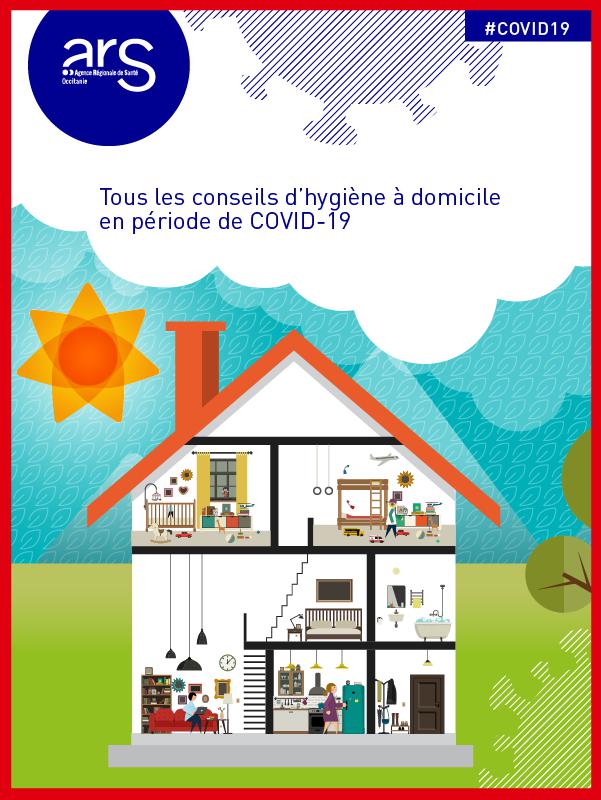Wash your hands regularly, do not kiss each other, keep a meter away from people, cough in his elbow… It has been several months now that barrier gestures against the Coronavirus have become essential to our daily lives. While a second wave is hitting Europe and more particularly France with full force, it is necessary to redouble our vigilance as regards the maintenance of barrier gestures but also the maintenance of one's habitat in times of coronavirus. is it about the lifespan of the virus at home, about its survival on the multiple surfaces that inhabit our rooms? How long does the virus stay on kitchen and bathroom surfaces? Here are some answers...

Ventilate your house to renew the indoor air
If in normal times, it is advisable to ventilate the rooms of the house twice a day by opening your windows wide, during this period of reconfinement , it is more than necessary to ventilate the house very regularly, especially to hunt for the virus. As a reminder, in normal times, it is advisable to ventilate all the rooms of the house for 10 to 15 minutes a day to renew the indoor air. This advice is all the more to be followed in this period of a pandemic. The WHO therefore recommends regular ventilation by opening the windows wide for 10 to 15 minutes twice a day. Ventilate more if you're drying clothes, or if you're cooking or doing crafts. Also take the opportunity to shake your sofa cushions and carpets as you go.
Video of the day:Cleaning household surfaces to fight the virus
Viruses do not all have the same longevity on surfaces. Although we now know that SARS-CoV-2 is mainly transmitted by air, it can also survive for a long time on surfaces in any enclosed place. Also, the question of the survival time of Covid-19 on surfaces and other household objects has already given rise to several studies. Already last March American researchers had published a study in the New England Journal of Medicine. By projecting a few droplets of water loaded with the virus on different surfaces, their research had shown that plastic seemed to be the material most susceptible to the virus since it would be viable there for three days. It would last two days on a stainless steel sink and 24 hours on a cardboard box. Figures recently confirmed by a study conducted by Japanese researchers and published in the journal Clinical Infectious Disease.
There is no need to panic and track down any suspicious area of the house when reading these figures. These researchers specified that these results had been found under the conditions of experiments carried out in the laboratory with a certain level of humidity and at certain temperatures. Specific characteristics to take into account since they are not necessarily those of our interiors. Again, it's all about taking the right steps to protect yourself from the virus and to prevent it from spreading.
As with any virus, you have to target the risk areas in the house. These are all those elements that we touch several times a day without realizing it: switches, door handles, but also cupboards, refrigerators, microwaves, ovens, keyboards. computer, remote controls, smartphones, keys, taps, toilet flushing... The list is long but necessary so as not to forget anything when using the disinfectant wipe!
Read also:Clean all contaminated surfaces yes, but with what?
To clean and disinfect every corner of your home, give priority to the disinfectant par excellence: bleach. After a classic maintenance with black soap or white vinegar, spray a mixture of water and a few drops of bleach on the surfaces to be disinfected. Leave on for 15 minutes and wipe thoroughly with a microfiber cloth. On the floor side, vacuum regularly and, depending on the type of floor, do not hesitate to clean with bleach diluted with water or with a disinfectant wipe.
Wash your household linen more regularly at high temperatures
During all periods of the virus, it is necessary to wash your household linen more regularly in order to avoid the risk of contamination. If the priority is necessarily on bed linen and bath towels, washing clothes worn outside more regularly is obviously advisable. Sheets, pillows and others will get rid of viruses if they are washed at least 60% with a laundry disinfectant, the operation will be even more effective. Washing necessarily involves changing your linens every week as a precaution.
Ensure the special maintenance of the kitchen and the bathroom
Both the bathroom and the kitchen must be particularly cleaned, and more than ever in such a context. WC, shower, basin, floors and handles of bathroom furniture must be disinfected. Same story on the side of the kitchen which will have to be meticulously cleaned regularly. Small exception for her: the kitchen will have to be revamped once the shopping has been done. And yes, the races come from outside, they have been touched by others than you, so you will have to unpack them carefully, remove the plastic and cardboard packaging that should not be left lying around and place them as soon as possible in waste sorting bag. The shopping will then be stored in the cupboards as in the refrigerator. Once everything is in its place, it will be necessary to strip with white vinegar or disinfect the work surface.
ShareSend by emailI certify that I do not send spam







